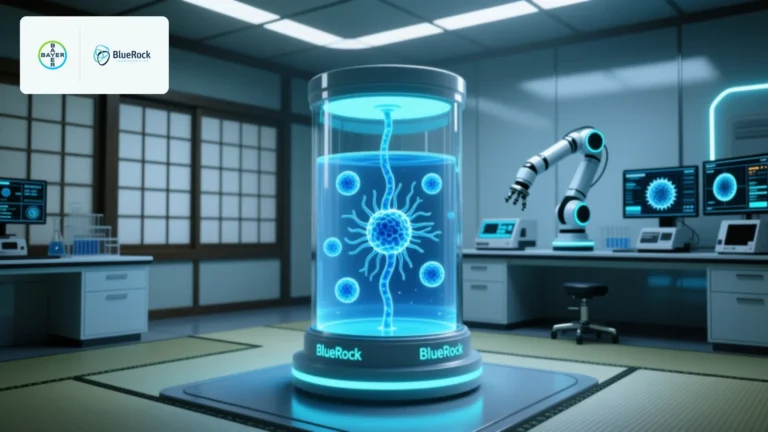
Pharma Doubles Down on R&D Amid Global Headwinds, Eyes Nearly $340 Billion in Investment by 2030
Despite formidable political and economic challenges ranging from inflation and rising operational costs to geopolitical instability and regulatory pressures, the global pharmaceutical industry continued to deepen its commitment to research and development (R&D) in 2024. According to yet-to-be-released data from Evaluate Pharma, the sector’s R&D spending rose by 1.5% year-over-year, bringing the total global investment to nearly $288 billion. While the rate of growth slowed significantly compared to the 11.5% surge seen from 2022 to 2023, the figures reflect a resilient and strategic pivot toward long-term innovation, even amid volatile market conditions.
The data, previewed by BioSpace ahead of the release of Evaluate Pharma’s World Preview 2025 report in June, offers a glimpse into the strategic calculus driving R&D decisions in the pharmaceutical sector. Daniel Chancellor, Vice President of Thought Leadership at Norstella—Evaluate Pharma’s parent company—emphasized the centrality of R&D investment to sustaining the industry’s long-term commercial viability.
“R&D is central to refreshing product portfolios, which have a natural lifecycle owing to patents and exclusivity periods,” Chancellor told BioSpace. “Without reinvestment into R&D (or business development), revenues are increasingly at risk of competition and will inevitably decline.”
Long-Term R&D Growth Forecast Remains Bullish
Despite the comparatively modest growth in 2024, Evaluate remains bullish on long-term R&D expansion. The firm projects that total pharmaceutical R&D expenditures could approach $340 billion by 2030, marking a continued upward trajectory even as macroeconomic conditions and regulatory landscapes become increasingly complex.
“R&D spending will continue to grow, thankfully because industry revenue growth is robust,” Chancellor said, noting that revenue from blockbuster drugs and expanding pipelines have provided the financial headroom for companies to keep investing. However, he also offered a cautionary note: “Evaluate expects R&D margins to decline” as pharmaceutical companies enact cost containment strategies to offset external pressures such as tariffs, drug pricing constraints, and the rising cost of capital.
In other words, while the headline figures suggest continued investment, underlying shifts in strategy may point toward more targeted, ROI-focused R&D initiatives in the years ahead.
Political Risks and Revenue Pressures
Not everyone is as optimistic about the industry’s ability to sustain its R&D momentum. Guglielmo Bruni Roccia, a senior pharmaceutical industry analyst at BMI, a Fitch Solutions company, flagged growing political and regulatory risks, particularly in the United States, as potential headwinds for future R&D funding.
Roccia pointed specifically to former President Donald Trump’s “Most Favored Nation” drug pricing policy as a possible disruptor. If such pricing controls are implemented or revived, they could significantly compress pharmaceutical revenues in the U.S. market—still the largest and most lucrative globally. “This would in turn reduce available R&D funding,” Roccia warned.
In response to such pressures, Roccia expects companies to become more selective in their R&D prioritization. “With constrained revenue streams, we expect pharmaceutical companies will likely prioritize R&D projects with greater certainty of profitability and where they have a greater competitive advantage,” he said.
This could result in fewer moonshot projects and a shift toward lower-risk, high-reward therapeutic areas, especially those with established commercial pathways or accelerated regulatory pathways.
Manufacturing Expansion Signals R&D Alignment
Despite these financial and political risks, industry analysts note that increasing investment in pharmaceutical manufacturing is not a sign of R&D being deprioritized. On the contrary, experts say that infrastructure development is closely tied to innovation efforts, and may in fact support more advanced R&D output in the long term.
“Infrastructure investments enhance R&D capabilities, indicating a complementary rather than competitive relationship,” Roccia explained. He noted that manufacturing expansions—such as the construction of new biologics facilities or advanced cell and gene therapy sites—serve as essential scaffolding for bringing future R&D successes to market.
Chancellor echoed this sentiment, stating, “These new facilities will rely on the success of R&D to produce the drugs of tomorrow, as well as meeting demand for current portfolios.” In essence, the physical expansion of production capabilities signals a broader commitment to scaling innovation from the lab bench to the patient bedside.
M&A and Licensing Deals Fuel Pipeline Growth
Another major factor buoying the pharmaceutical R&D outlook in 2024 was the continued flurry of mergers, acquisitions, and licensing deals. Despite an increasingly complex regulatory environment—especially in the U.S. and Europe—deal-making remained a central pillar of pharmaceutical strategy in the first quarter of 2024.
According to BioSpace’s analysis, approximately $40 billion was earmarked for business development initiatives in Q1 alone. Many of the industry’s top R&D spenders made major moves to acquire late-stage assets, enter strategic partnerships, or in-license promising drug candidates, particularly in oncology, rare diseases, and immunology.
These deals are not just financial transactions—they often come with significant accompanying R&D investment to advance acquired programs, complete ongoing clinical trials, or transition experimental drugs into new indications. Indeed, nearly all top R&D investors in 2024 were anchored by one or more major partnerships or acquisitions, each worth hundreds of millions of dollars.
This trend highlights a strategic shift within the industry: in-house R&D is increasingly being supplemented—and in many cases accelerated—through external innovation. This hybrid model allows large pharmaceutical companies to rapidly expand their pipelines while reducing early-stage development risks.
Toward a More Focused and Resilient R&D Strategy
As the pharmaceutical sector navigates through a turbulent global landscape, its commitment to innovation remains remarkably durable. While growth in R&D spending slowed in 2024, the industry’s nearly $288 billion investment underscores its continued focus on discovery, pipeline expansion, and long-term revenue generation.
Analysts agree that while external pressures—from pricing regulation to capital cost increases—may require a more disciplined approach to R&D budgeting, the sector is unlikely to back away from innovation altogether. Instead, companies are expected to pursue more focused, data-driven, and partnership-oriented strategies.
The rise in manufacturing investments, the continuation of high-value deals, and the industry’s long-term outlook all point to an ecosystem where R&D is not just a cost center but a strategic asset.
With Evaluate forecasting nearly $340 billion in global R&D investment by 2030, the pharmaceutical sector is signaling its intent to weather economic and political headwinds through innovation. However, the pathway ahead will require careful navigation—balancing revenue constraints, regulatory scrutiny, and investor expectations with the scientific and clinical imperative to develop the next generation of therapies.
For now, the message is clear: pharma may be moving more cautiously, but it is not slowing down. Innovation remains the cornerstone of the industry’s future—and companies are willing to invest billions to secure it.




